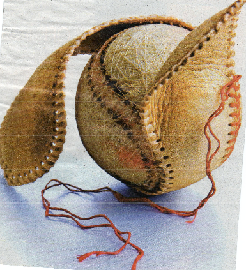

In 1980 I self-published a book, “Let’s Design A Dress”, and advertised it in Glamour Magazine. The book’s purpose was to present to young designers a new and far more efficient way to learn pattern making, especially for production. The system involved a set of nine Primitives (slopers) as a standardized base for all women’s clothing. For students, starting with a standard pattern with industry production information encoded, leaves the designer freer to create. In the late 1980’s these “primitives” became the basis of my National Science Foundation grants, and I took the book off the market.
The first graphic is a page from that book. The process of pattern making that I teach, as I taught myself as a teen, is first done by visualizing inside the mind, rather than follow a set of rules, drafting and measurements that stultify creativity. To train students to “see” in their minds, the 3D clothing style and translate to the 2D pattern pieces, I prepared various exercises. The chart of five everyday 3D objects, translated to their 2D pattern pieces, was one of those exercises. Study each one, then close your eyes, and visualize the 3D object unfolding to become the 2D pattern pieces. And then, start with the 2D pieces, close your eyes, and visualize how the pieces fold into the 3D shape. Do this over and over and its amazing how it trains the mind to begin making patterns inside, as great engineers are capable of.
About twice a year I teach a class, “Fashion/Pattern Design for Beginners” in which I use this chart, one of which I started last night. To my great surprise , the October 8th Boston Sunday Globe Magazine cover had a picture of the 5th object in the chart, a baseball unfolding. It was depicting the Red Sox falling apart. It is ideal for those that have difficulty with “spatial relations” of 3D – 2D translations.
(Note) Sarah, in a comment, asked about how I “stretched the bias” in “Creative Technical Solutions, 1960 Bias Shape”. In another day or two I will post a sketch explaining just how I did that. Remember, everyone who reads my posts, you can sign up to receive them in an email through FeedBlitz. And, I always love answering questions.

1 comment:
What a lovely simple way to teach spatial thinking--although i think some of us come by it naturally, for whatever reason--i've always believed it can be taught. After working as a patternmaker/designer for so many years i often visualize a design--lately i've been thinking of a soft hat with four points--and then how i might pattern it--what the pieces would look like and how i would construct it. Sometimes i work things out in paper--especially if i'm doing something new and complicated or testing to see if what i don't think will work really won't work. Then i'm ready to play with fabric. Anyway these exercises are a great way to get one's mind used to thinking visually--and you can use that skill for all kinds of things beyond patternmaking--for example thinking about changing the furniture around in a room? You can visualize it.
Great work Shirley--but you probably know that cuz you've seen it work for people.
Post a Comment